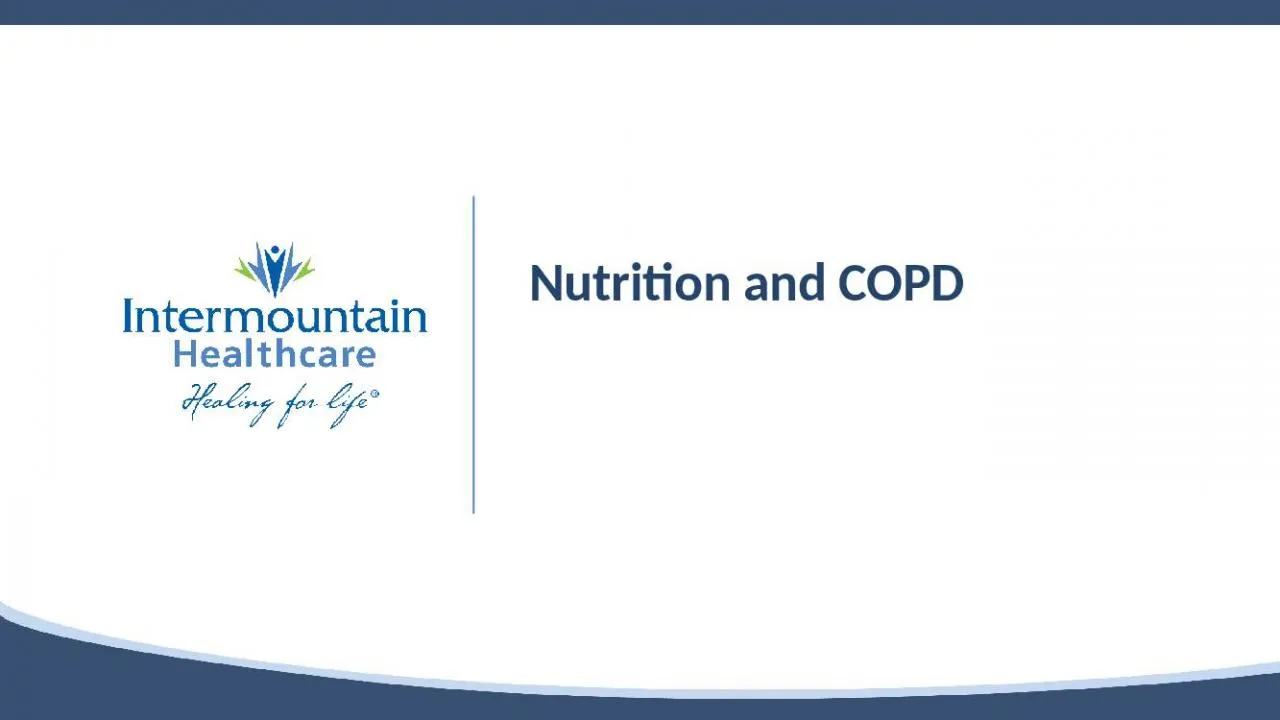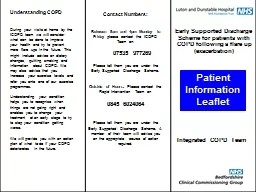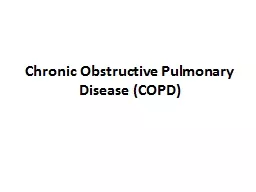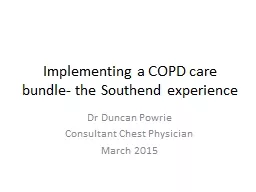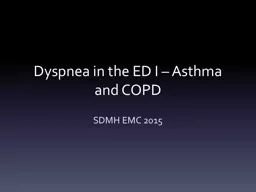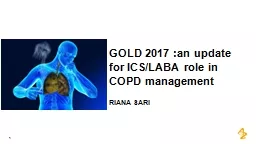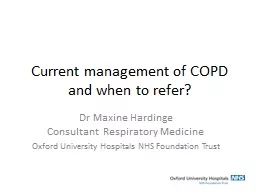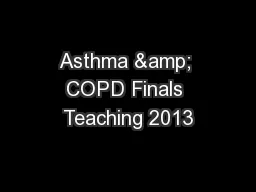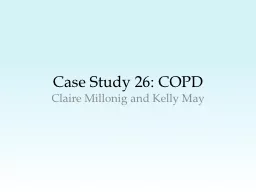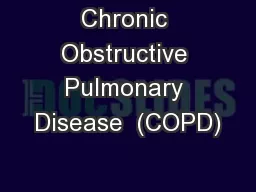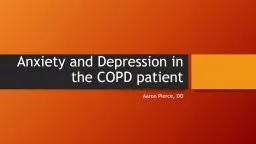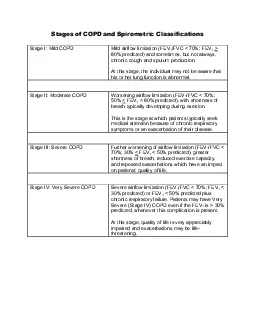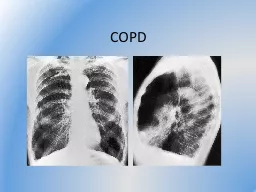PPT-Nutrition and COPD Why is nutrition so important?
Author : anderson | Published Date : 2022-05-17
Malnutrition and COPD Basics of healthy eating Special considerations with COPD Eating hints Mealsnack ideas Overview Nutrition and COPD Smart food choices will
Presentation Embed Code
Download Presentation
Download Presentation The PPT/PDF document "Nutrition and COPD Why is nutrition so i..." is the property of its rightful owner. Permission is granted to download and print the materials on this website for personal, non-commercial use only, and to display it on your personal computer provided you do not modify the materials and that you retain all copyright notices contained in the materials. By downloading content from our website, you accept the terms of this agreement.
Nutrition and COPD Why is nutrition so important?: Transcript
Malnutrition and COPD Basics of healthy eating Special considerations with COPD Eating hints Mealsnack ideas Overview Nutrition and COPD Smart food choices will help you stay healthy and feel better. Over time the airways of those suffering from COPD become permanently obstructed or blocked and gradually lose their ability to function COPD is a major cause of disability and death in Canada and throughout the world According to a recent study 15 During your visits at home by the ICOPD team we will consider what can be done to improve your health and try to prevent more flare ups in the future. This might include advice on dietary changes, quitting smoking and information about COPD. We may also advise that you increase your exercise levels and refer you onto one of our exercise programmes.. COPD is characterized by :. **Chronic airflow obstruction & accelerated . . loss of lung function which is progressive & . NOT. fully reversible.. ** COPD is preventable & treatable but . Dr Duncan Powrie. Consultant Chest Physician. March 2015. 2010 discharge checklist first developed. Completion rates were poor. Lack of responsibility for actions. No clear division between nursing and medical responsibility for tasks. SDMH EMC 2015. 1 - Asthma. Objectives. Understand assessment of acute asthma in adults. Outline management strategy dependent upon severity. Approach to initial management of the severe asthmatic. Safe discharge of the asthmatic patient. management. RIANA SARI. 1. Agenda. Definisi. PPOK GOLD 2017. Etiologi. , . patobiologi. & . Patologi. PPOK. Diagnosis . dan. . penilaian. . awal. Tatalaksana. PPOK GOLD 2017. Peranan. . kombinasi. Dr Maxine Hardinge. Consultant Respiratory . Medicine . Oxford . University Hospitals NHS Foundation Trust. Aims of treatment – reducing risk and reducing symptoms. Inhaled therapy – . new Oxfordshire . Alison . Portes. FY1. Objectives. Main features of asthma and COPD. Focus on clinicals – history, examination, investigations, management. 10 minutes on each . Quiz and summary of key points. A few added extras…. Millonig. and Kelly May. Introduction. COPD. Chronic Obstructive Pulmonary Disease. A disease that limits airflow through either inflammation of the lining of the bronchial tubes or destruction of the alveoli. Angela . Voraotsady. Outline . Definition. Epidemiology. Clinical Aspects. Treatment. Effects of Exercise. Exercise Testing. Exercise Prescription. Summary and Conclusion. References. Chronic Obstructive Pulmonary Disorder. Aaron Pierce, DO. Disclosure. I have no relevant financial relationships or affiliations with commercial interests to disclose.. Objectives. Briefly review COPD pathology and treatment. Review . Prevalence of anxiety and depression in COPD. 80 predicted and sometimes but not always Stage II Moderate COPD Worsening airflow limitation FEVbreath typically developing during exertion This is the stage at which patients typically seek medical What is COPD?. How to treat COPD?. What is the prognosis?. 19.3% of US Adults Smoke – 2010. CDC, NHIS 2010. 2010 Current Smokers. %. of Smokers. Demographic. % of Smokers. Demographic. 19.3%. US Adults. Hetal . Dhruve. . Chandra Sarkar. Aims. Overview of spirometry and . interpretion. . Treatment of COPD . COPD Care plans. Questions . Why spirometry?. Discrepancy . in prevalence of COPD from . rightcare.
Download Document
Here is the link to download the presentation.
"Nutrition and COPD Why is nutrition so important?"The content belongs to its owner. You may download and print it for personal use, without modification, and keep all copyright notices. By downloading, you agree to these terms.
Related Documents

